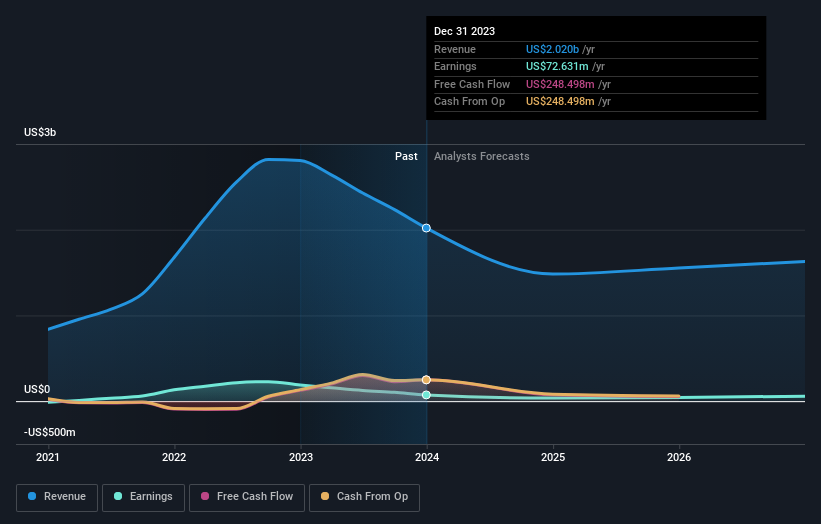Cross Country Healthcare, Inc. (NASDAQ:CCRN) Consensus Forecasts Have Become A Little Darker Since Its Latest Report
Cross Country Healthcare, Inc. (NASDAQ:CCRN) shareholders are probably feeling a little disappointed, since its shares fell 3.1% to US$17.00 in the week after its latest yearly results. Cross Country Healthcare reported in line with analyst predictions, delivering revenues of US$2.0b and statutory earnings per share of US$2.05, suggesting the business is executing well and in line with its plan. This is an important time for investors, as they can track a company's performance in its report, look at what experts are forecasting for next year, and see if there has been any change to expectations for the business. We've gathered the most recent statutory forecasts to see whether the analysts have changed their earnings models, following these results.
Check out our latest analysis for Cross Country Healthcare
Taking into account the latest results, the nine analysts covering Cross Country Healthcare provided consensus estimates of US$1.48b revenue in 2024, which would reflect a painful 27% decline over the past 12 months. Statutory earnings per share are expected to tumble 51% to US$1.03 in the same period. In the lead-up to this report, the analysts had been modelling revenues of US$1.60b and earnings per share (EPS) of US$1.47 in 2024. The analysts seem less optimistic after the recent results, reducing their revenue forecasts and making a pretty serious reduction to earnings per share numbers.
It'll come as no surprise then, to learn that the analysts have cut their price target 12% to US$19.83. That's not the only conclusion we can draw from this data however, as some investors also like to consider the spread in estimates when evaluating analyst price targets. Currently, the most bullish analyst values Cross Country Healthcare at US$26.00 per share, while the most bearish prices it at US$16.00. These price targets show that analysts do have some differing views on the business, but the estimates do not vary enough to suggest to us that some are betting on wild success or utter failure.
Looking at the bigger picture now, one of the ways we can make sense of these forecasts is to see how they measure up against both past performance and industry growth estimates. We would highlight that revenue is expected to reverse, with a forecast 27% annualised decline to the end of 2024. That is a notable change from historical growth of 29% over the last five years. Compare this with our data, which suggests that other companies in the same industry are, in aggregate, expected to see their revenue grow 6.5% per year. It's pretty clear that Cross Country Healthcare's revenues are expected to perform substantially worse than the wider industry.
The Bottom Line
The most important thing to take away is that the analysts downgraded their earnings per share estimates, showing that there has been a clear decline in sentiment following these results. Unfortunately, they also downgraded their revenue estimates, and our data indicates underperformance compared to the wider industry. Even so, earnings per share are more important to the intrinsic value of the business. Furthermore, the analysts also cut their price targets, suggesting that the latest news has led to greater pessimism about the intrinsic value of the business.
Keeping that in mind, we still think that the longer term trajectory of the business is much more important for investors to consider. We have forecasts for Cross Country Healthcare going out to 2026, and you can see them free on our platform here.
And what about risks? Every company has them, and we've spotted 2 warning signs for Cross Country Healthcare (of which 1 is a bit concerning!) you should know about.
Have feedback on this article? Concerned about the content? Get in touch with us directly. Alternatively, email editorial-team (at) simplywallst.com.
This article by Simply Wall St is general in nature. We provide commentary based on historical data and analyst forecasts only using an unbiased methodology and our articles are not intended to be financial advice. It does not constitute a recommendation to buy or sell any stock, and does not take account of your objectives, or your financial situation. We aim to bring you long-term focused analysis driven by fundamental data. Note that our analysis may not factor in the latest price-sensitive company announcements or qualitative material. Simply Wall St has no position in any stocks mentioned.

